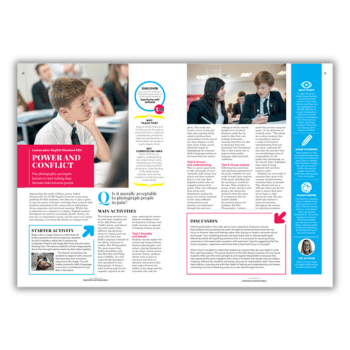In this lesson plan, war photography inspires learners to start making deep thematic links between Power and Conflict poetry.
Approaching the study of 15 poems, linked thematically, for GCSE English literature poses many problems for KS4 students.
They often try to play a game of ‘spot the poetic technique’ and begin their analysis with detailed annotations of key terms such as alliteration, rhyme sequences and structural meaning.
Whilst this is important in a response to a degree, English teachers throughout the land are screaming silently. Surely, the best way to understand a poem, and the poet’s true intent and meaning, is to access the theme on a deeper level?
This lesson does that by exploring the question ‘Is it morally acceptable to photograph people in pain?’.
Why teach this?
Explore GCSE Power and Conflict poetry through an emotional lens to inspire an understanding of themes, ideas and perspectives. This helps students access a poet’s deeper intent.
Key curriculum links
- Reading, understanding and responding to texts
- Developing an informed personal response
- Understanding the relationships between texts and the contexts in which they were written
Starter activity
Begin with an image linked to conflict that will evoke a powerful emotional response. Students should complete a verbal rally to explore key vocabulary linked to the image after 30 seconds of silent thinking time.
This allows students to think independently about their thoughts before exploring their ideas together.
Ask students to respond with one word that describes their emotional response to the image. This will create a semantic field of language to record on a whiteboard for use later in the lesson.
Claire Jones is head of English at Plympton Academy, Plymouth. Download a power and conflict poems bumper Year 9 worksheet pack.














